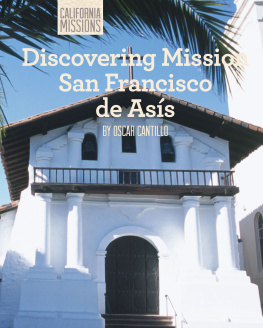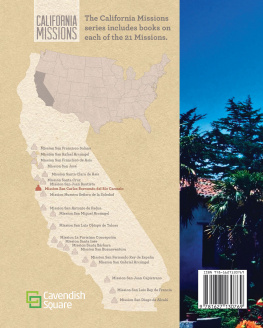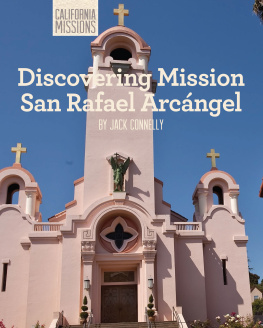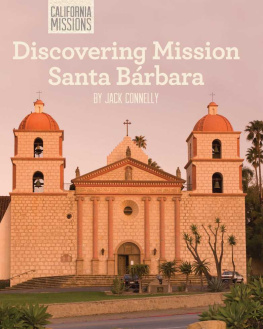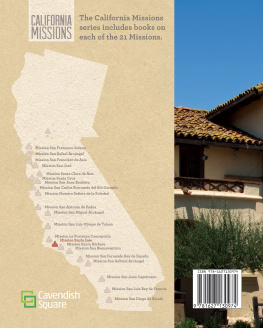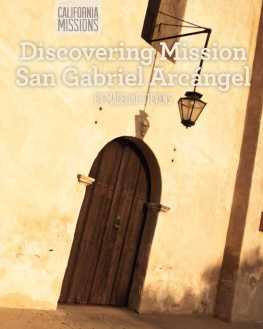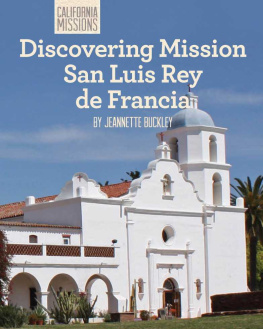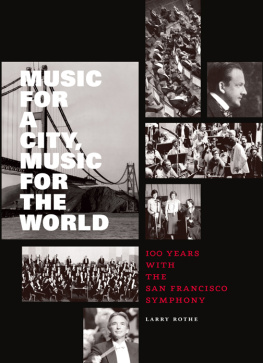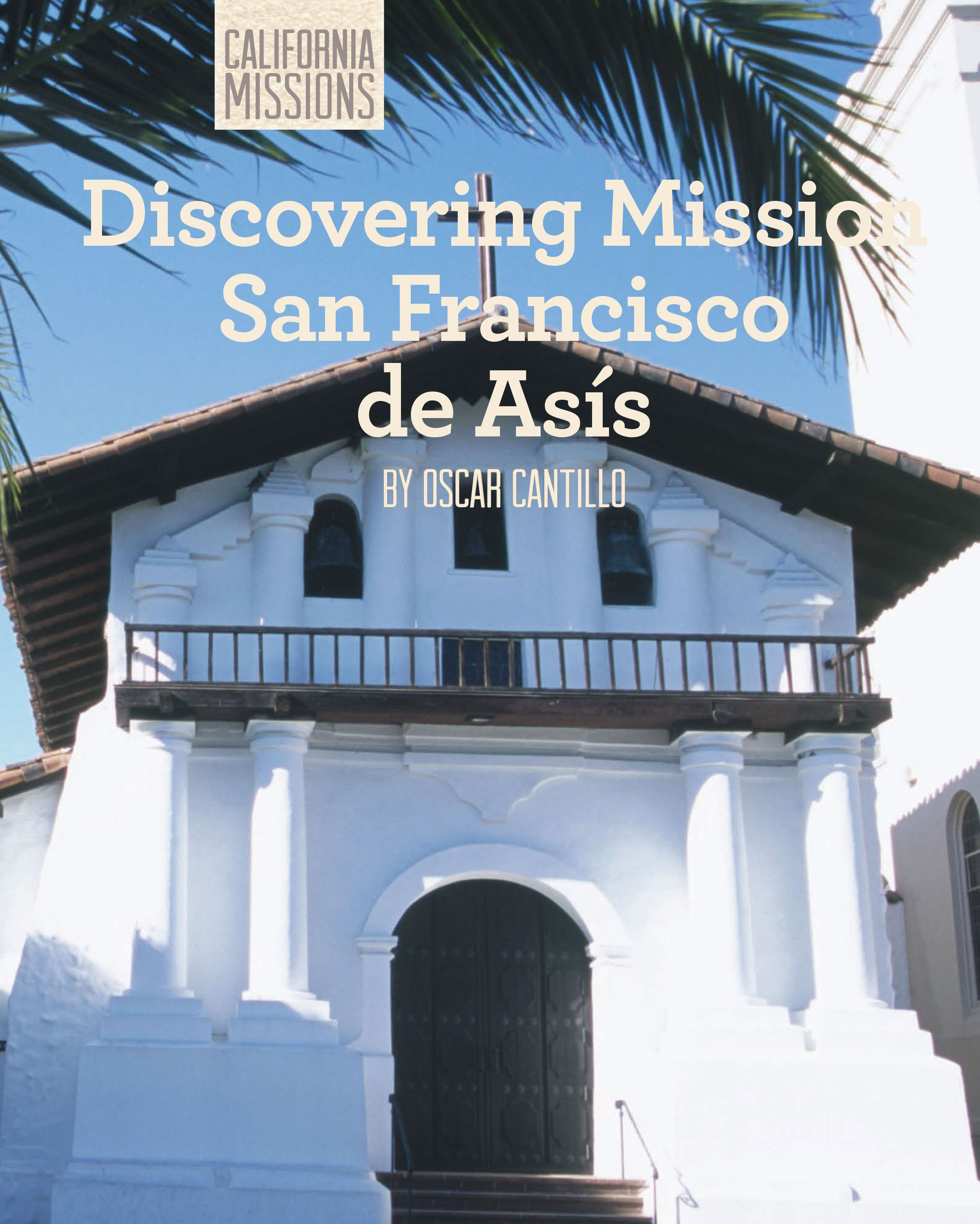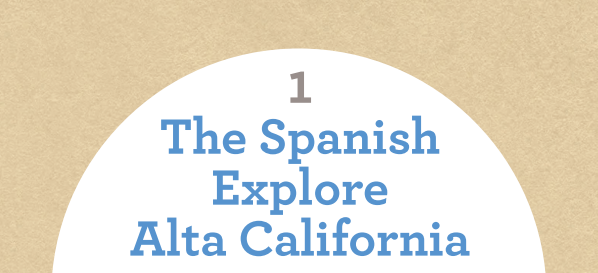Published in 2015 by Cavendish Square Publishing, LLC
243 5th Avenue, Suite 136, New York, NY 10016
Copyright 2015 by Cavendish Square Publishing, LLC First Edition
No part of this publication may be reproduced, stored in a retrieval system, or transmitted in any form or by any means-electronic, mechanical, photocopying, recording, or otherwise-without the prior permission of the copyright owner. Request for permission should be addressed to Permissions, Cavendish Square Publishing, 243 5th Avenue, Suite 136, New York, NY 10016.
Tel (877) 980-4450; fax (877) - 4454 .
Website: cavendishsq.com
This publication represents the opinions and views of the author based on his or her personal experience, knowledge, and research. The information in this book serves as a general guide only. The author and publisher have used their best efforts in preparing this book and disclaim liability rising directly or indirectly from the use and application of this book.
CPSIA Compliance Information: Batch #WS14CSQ
All websites were available and accurate when this book was sent to press.
Library of Congress Cataloging-in-Publication Data Cantillo, Oscar.
Discovering Mission San Francisco de Asis / Oscar Cantillo. pages cm. (California missions)
Includes index.
ISBN 978-1-62713-061-5 (hardcover) ISBN 978-1-62713-063-9 (ebook)
1. San Francisco de Asis Mission (San Francisco, Calif.)HistoryJuvenile literature. 2. Spanish mission buildingsCalifornia San FranciscoHistoryJuvenile literature. 3. FranciscansCaliforniaSan FranciscoHistoryJuvenile literature. 4. Ohlone IndiansMissionsCaliforniaSan FranciscoHistoryJuvenile literature. 5. CaliforniaHistoryTo 1846Juvenile literature.
I. Title.
F869.S393C45 2015
. ' dc
2014003425
Editorial Director: Dean Miller Editor: Kristen Susienka Copy Editor: Cynthia Roby Art Director: Jeffrey Talbot Designer: Douglas Brooks Photo Researcher: J8 Media Production Manager: Jennifer Ryder-Talbot Production Editor: David McNamara
The photographs in this book are used by permission and through the courtesy of: Cover photo by age fotostock/SuperStock; Mission San Francisco de Asis, founded June 1776 (photo), American School, (18th century)/San Francisco, California, USA/ Photo Barbara Singer/The Bridgeman Art Library, 1; Ambient Images Inc./SuperStock, 4; Courtesy of UC Berkeley, Bancroft Library, 8-9; Courtesy of UC Berkeley, Bancroft Library, 10; Courtesy CMRC, 12; 2014 Pentacle Press, 14; Courtesy CMRC, 17; Tom Simondi/missiontour.org, 20-21; DEA/M. SEEMULLER/De Agostini Picture Library/Getty Images, 25; Courtesy CMRC, 26; Library of Congress Prints and Photographs Division, 28-29; Courtesy of UC Berkeley, Bancroft Library, 32; Courtesy CMRC, 33; John S Lander/LightRocket/Getty Images, 34; age fotostock/SuperStock, 41.

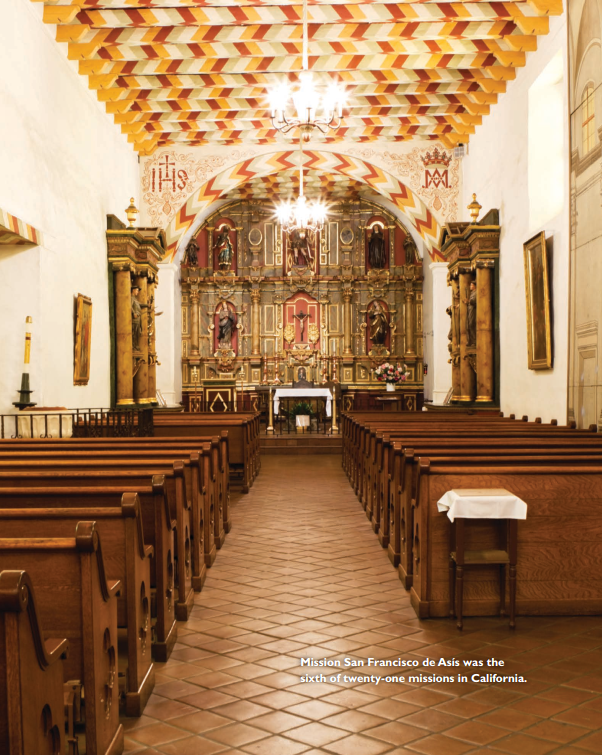
The heart of the city of San Francisco is home to a beautiful sandy building with two tall spires, each topped with a cross. This structure is Mission Dolores Basilica. Contrasting with the grand Basilica are the simple white walls and rust-colored tile roof of another smaller, older building that sits just beside: the original church of Mission San Francisco de Asis, usually called Mission Dolores. It is the sixth of twenty-one religious settlements called missions founded by Spanish colonists in California in the eighteenth and nineteenth centuries.
the Spanish arrive in the new world
The Spanish first became interested in California after Christopher Columbus discovered the lands that Europeans called the New World (North America, South America, and Central America) in 1492. At that time, Spain was a world power, eager to explore the New World in search of gold and other riches. The Spanish king, King Ferdinand, wanted to claim these lands and their resources for the Spanish empire. He also wanted to spread the Catholic religion throughout the world. Catholicism is a Christian religion based on the teachings of Jesus Christ and the Bible. In addition to wanting to help the Roman Catholic Church with gold and other resources from the New World, the Spanish wanted to teach the many indigenous, or Native, people living in the New World about Christianity.
In 1542, Juan Rodriguez Cabrillo became one of the first Spanish explorers to reach the western coast of North America. He and his crew landed near San Diegowhich Cabrillo named San Migueland claimed the land for their country.
At that time, the name Las Californias, meaning the Californias, described both the area that is now the region of Mexico called the Baja Peninsula and the area that is the state of California. The Baja Peninsula was known as Baja (meaning lower) California, while what is now the state of California was called Alta (meaning upper) California.
When Cabrillo sailed to Alta California, he saw many Native people living along the coast. The Spanish crew traded cloth and trinkets with them for acorn bread and berries. In his journals, Cabrillo described the people he met as friendly, generous, and peaceful.
The Spanish soon lost interest in this part of the world, however, since it did not have gold or other treasures like the lands of Central and South America had. It was almost 200 years later that Spain sent its first settlers to Alta California to set up military bases and to build missions.
Before the arrival of the Spanish, indigenous Californians populated the land of Alta California in hundreds of small villages, divided by their own languages. Each village belonged to a different tribe, or group, and mostly the tribes lived in the same area. There were many groups from the Ohlone nation living near the San Francisco Bay area when the missionaries came in the late 1700s. Although the Native people identified themselves according to their village and not as a single group, the Spanish considered them as one, which they called Coastanos, meaning coast people.
where the ohlone came from
No one knows exactly when the first Ohlone people arrived in what is now California. Some think that many thousands of years ago people from Asia walked across the frozen land that once connected Siberia to Alaska. Slowly, they moved south, and over time populated the areas around San Francisco Bay.
how the ohlone got food
The first Ohlone were hunters and gatherers, which meant they lived off the land, killing animals or collecting plants for their food.
The men used bows and arrowsthe tips of which were made from sharp black stones called obsidianto hunt game such as bear and deer. Because obsidian was not found in the area where the Ohlone lived, they traded nuts and clamshells to get the precious material from other tribes. They would also use baskets, made by the women of the tribe, to catch animals from the sea. The baskets were also used to gather food such as clams, onions, carrots, and grapes for the tribe to eat, to store food, to haul water, and to cook.

